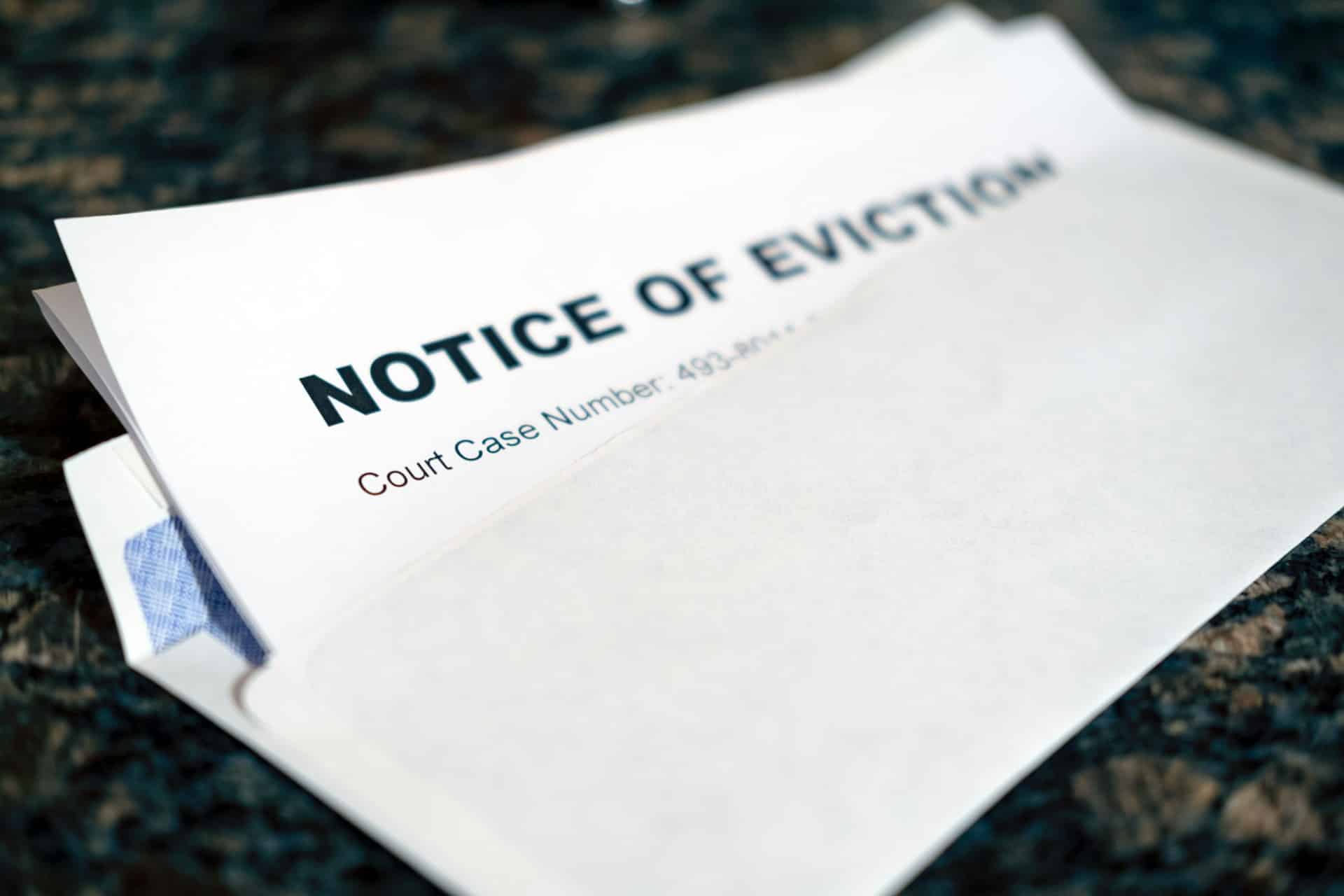It’s one of those situations most people hope they’ll never face—realizing a family member living in your home needs to move out. Maybe they moved in to get back on their feet, or perhaps the arrangement began as a kind gesture but has since turned into tension, unpaid bills, or constant conflict. Figuring out how to evict a family member from your home is emotional and complicated, but it’s also something that can be handled fairly, legally, and with dignity for everyone involved. In my experience as a real estate professional, the key is balancing compassion with clear boundaries and understanding your legal rights every step of the way.
Why evicting a family member is emotionally and legally complex
Unlike a typical landlord-tenant relationship, evicting a relative involves emotion, history, and sometimes guilt. You’re not just enforcing property rights—you’re redefining a relationship dynamic that may have existed for decades. It’s perfectly natural to feel conflicted. On one hand, you want to protect your home and peace of mind. On the other, you may worry about how it will affect your family long-term. The truth is, setting boundaries isn’t cruel—it’s necessary. Clear communication, written documentation, and following the law are what keep both sides protected and relationships intact in the long run.
First, determine your family member’s legal status
Before you take any action, you need to figure out whether your family member is legally considered a tenant, a guest, or something in between. This determines what kind of eviction process applies in your state.
- Guest: A short-term visitor who does not pay rent, contribute to bills, or receive mail at your address. Guests typically can be asked to leave immediately, though state laws differ on how “reasonable” notice should be handled.
- Tenant: Someone who pays rent or has lived on the property long enough to establish residency—sometimes even without a lease. Tenants must go through formal eviction proceedings under state landlord-tenant laws.
- Licensee or occupant: In many states, someone who doesn’t pay rent but has permission to stay (like an adult child or sibling) may be considered a “licensee.” They still require notice to vacate before you can remove them.
In short, if the person has been living there long enough to establish residency—receiving mail, contributing to utilities, or calling it their home—you’ll likely need to follow your state’s eviction process rather than simply changing the locks. Every state defines these relationships slightly differently, so it’s smart to confirm with a local housing authority or legal aid office.
Understanding the legal eviction process for a family member
The eviction process is designed to protect both the homeowner and the occupant. Even when emotions run high, skipping steps can create major problems later. Most states outline a similar basic structure for legal eviction, though notice periods and documentation requirements may vary. According to Nolo’s eviction guidelines, these are the general steps homeowners should follow:
- Step 1: Give written notice to vacate. This is the formal communication stating that you’re ending the living arrangement and giving a set time (often 30 days) for the person to move out.
- Step 2: File for eviction in court. If your family member doesn’t leave by the deadline, you’ll need to file an eviction lawsuit—commonly called an “unlawful detainer” or “summary eviction.”
- Step 3: Attend a court hearing. Both parties can present their side. If the court rules in your favor, it issues a judgment for possession.
- Step 4: Enforce the eviction order. Only a sheriff or authorized law enforcement officer can physically remove the person from the property. You cannot do it yourself under any circumstances.
While the process can sound intimidating, following it correctly protects you from potential countersuits and prevents accusations of unlawful eviction. Even when it’s family, the same legal standards apply.
Why self-help eviction can backfire
It might be tempting to change the locks, shut off utilities, or move someone’s belongings out yourself—but that’s almost always illegal. According to the Consumer Financial Protection Bureau and multiple state housing laws, landlords (and homeowners) must use legal channels to remove occupants. “Self-help” evictions—where you remove someone without a court order—can lead to fines, lawsuits, and even criminal charges in some states.
Even if the person isn’t paying rent, it’s worth handling the situation the right way. The court process might take longer, but it ensures that everything is documented, enforceable, and free from personal retaliation. Think of it as the clean, professional route that keeps things from spiraling into unnecessary conflict.
How to handle the situation with empathy and firmness
Evicting a family member doesn’t have to turn into a war. It can be done with empathy and mutual respect—even if the relationship is strained. Here’s how to navigate both the emotional and practical sides at once:
- Communicate directly and calmly. Avoid blaming or arguing. State your reasons clearly, focus on the need for change, and set expectations about timing.
- Set clear boundaries. If you’re offering time to find other housing, be specific—two weeks, 30 days, etc. Avoid open-ended promises that cause confusion.
- Put it in writing. Even among family, written notice helps avoid misunderstandings later.
- Stay consistent. Once you’ve given notice, don’t reverse your decision unless something genuinely changes. Mixed messages prolong the process and cause frustration for both sides.
- Consider mediation. Some states offer free or low-cost housing mediation programs that help families reach agreements without court. Mediation often works well when emotions run high but both sides want a peaceful resolution.
Setting boundaries isn’t a sign of coldness—it’s a form of respect for both your needs and theirs. The goal is clarity, not cruelty.
When eviction isn’t the only solution
Sometimes eviction feels like the only option, but depending on your relationship and situation, there may be alternatives worth exploring. These options can save stress and preserve family harmony when handled properly:
- Formal rental agreement: If the issue is unclear expectations, putting everything in writing—rent, chores, timelines—can reset the relationship.
- Short-term grace period: Agree on a final move-out date and stick to it. This approach often works for adult children or relatives between jobs.
- Mediation or counseling: Third-party mediators can facilitate healthy boundaries before legal eviction becomes necessary.
- Sale or relocation: In some cases, it’s easier to sell the property and start fresh, especially if the living situation is beyond repair.
These alternatives don’t work for everyone, but they’re worth considering before moving forward with formal eviction. Sometimes just having an end date in writing restores peace and accountability.
What to expect emotionally after an eviction
It’s easy to underestimate how much emotional energy eviction takes, even when it’s the right choice. Guilt, anger, sadness, or relief are all common—and sometimes they overlap. Remember, this decision isn’t about rejecting your family member as a person; it’s about reclaiming your home as a safe and balanced space. Many homeowners I’ve worked with say that once the process was complete, relationships eventually improved because clear boundaries replaced tension and resentment. Give both sides time and space to reset emotionally.
Frequently Asked Questions (FAQs) About Evicting a Family Member
Can I evict a family member without a lease?
Yes, but only by following the correct legal process. Even without a written lease, your family member may have established “tenancy at will” by living in your home for an extended period or paying household expenses. You’ll still need to serve proper notice and, if necessary, file for eviction through your local court.
What if my family member refuses to leave after I give them notice?
If they ignore your written notice, you must file a formal eviction case with your local court. After winning the case, law enforcement (typically a sheriff or constable) will handle the physical removal. Never attempt to remove them yourself—it could be considered illegal eviction or harassment.
Can I throw out their belongings once they’re gone?
No. Most states require you to store a person’s belongings for a certain period after eviction, especially if they left them behind. Rules vary by state, so check your local landlord-tenant laws before disposing of anything.
What if the person I’m evicting is a minor?
If the family member is under 18, you generally cannot “evict” them in the legal sense. Instead, you may need to contact local social services or family court for guidance. Removing a minor without proper oversight can have serious legal consequences.
Do I need a lawyer to evict a family member?
While you can file eviction paperwork on your own, having an attorney familiar with housing law is strongly recommended. An experienced lawyer can ensure that every notice, filing, and deadline complies with your state’s specific requirements. Free legal aid services are available in many areas for low-income homeowners.
Can I accept rent payments while trying to evict someone?
Be careful. Accepting rent or any payment during or after serving an eviction notice can restart the tenancy in many states. If you’ve already begun the eviction process, avoid taking further payments unless your attorney advises otherwise.
What’s the difference between eviction and removing a guest?
If someone has only stayed a short time, doesn’t pay rent, and hasn’t established residency, they’re likely considered a guest rather than a tenant. In most states, you can revoke their permission to stay and ask them to leave immediately. If they refuse, law enforcement can assist—but only after you’ve shown that they were a guest, not a legal occupant.
How long does it take to evict a family member?
Timelines vary widely. In some states, eviction can take as little as two to four weeks, while in others it may take several months depending on court scheduling and notice periods. Delays often happen when proper notice isn’t given, so follow your local rules carefully from the start.
What if I just want to sell the house and avoid conflict?
That’s a valid option. If eviction feels emotionally draining or the property itself is causing stress, selling it—especially to a cash buyer—can help you move on without the drama. Some homeowners choose this route to protect their peace and start over somewhere new.
Final thoughts
Evicting a family member from your home is one of the hardest personal and legal challenges a homeowner can face. It tests patience, boundaries, and relationships. But it can also bring closure and peace when done respectfully and legally. Remember, this isn’t about punishment—it’s about protecting your home and emotional well-being. Stay organized, follow the law, and keep empathy at the center of every conversation.
If you’ve reached the point where eviction feels overwhelming or you simply want a fresh start, Pavel Buys Houses can help. We buy homes nationwide in any condition, often closing within days so you can avoid lengthy legal battles and move on with clarity. Whether you’re dealing with a difficult living arrangement or just need to sell quickly, our team offers a fair cash offer and a smooth, confidential process.
⚡ Sell Your House Fast
"*" indicates required fields

Pavel Khaykin
Pavel Khaykin is the founder and author of Pavel Buys Houses, a nationwide home buying company that helps homeowners sell their properties quickly for cash. With a strong background in real estate and digital marketing, Pavel has been featured in The New York Times, ABC News, and The Huffington Post. His mission is to make the home-selling process simple, transparent, and trustworthy for every homeowner he works with.







